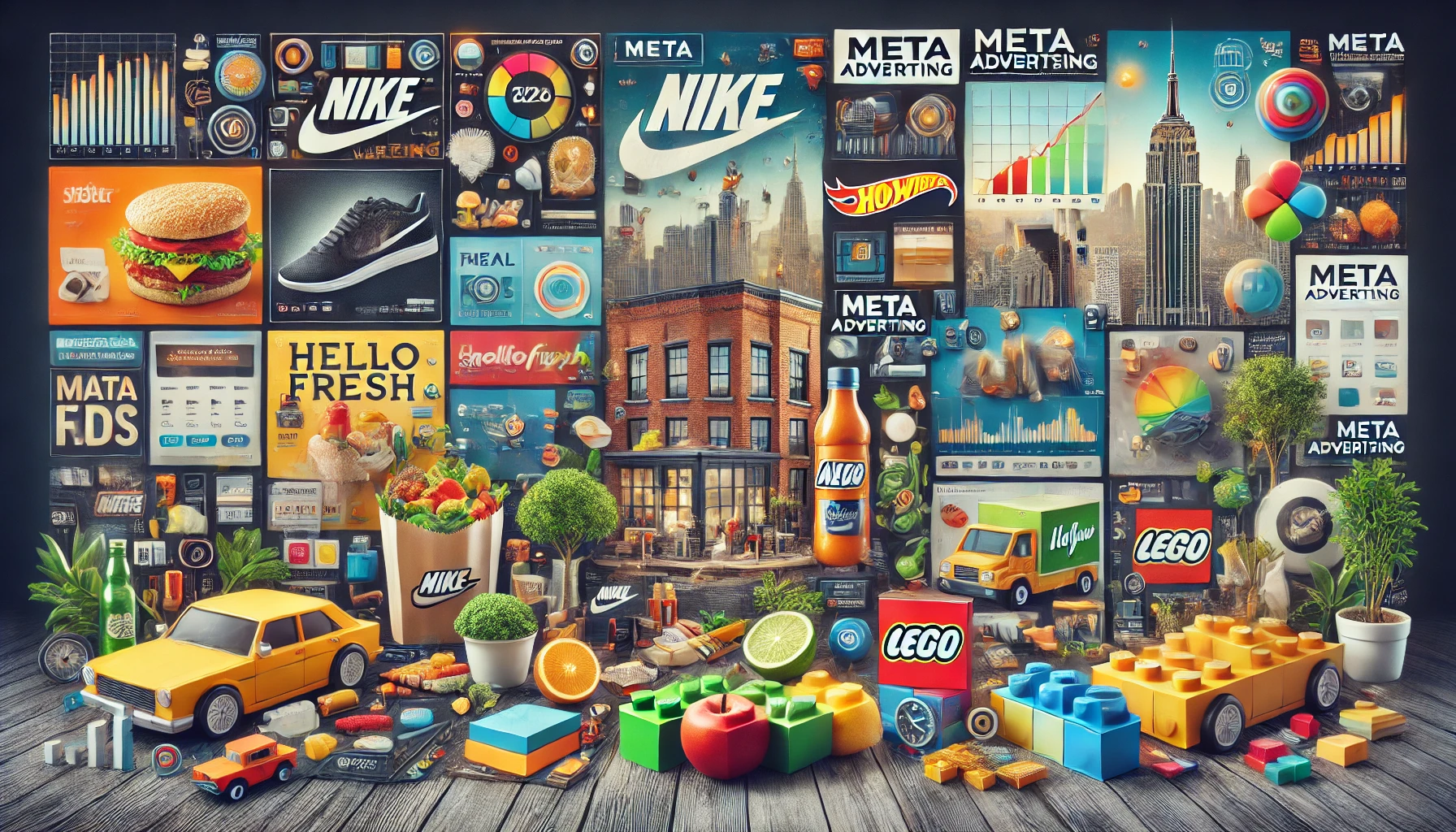Conventional wisdom tells us that nobody likes advertisements. They’re an interruption, an annoyance, and, worst of all, an obstacle. They get in the way of what we’re trying to do and they’re never the thing we’re looking for. Except for when they are.
That’s the thing about conventional wisdom. It’s so conventional.
So, then, what about unconventional wisdom?
Unconventional wisdom tells us that, actually, people do like advertisements. In fact, they love them… When they’re done right.. The key is in making sure your advertisements aren’t interruptions, annoyances, and obstacles.
Your advertisements have to be the thing a user is looking for, the answer to their problem. They have to be short and to the point, but also informative. They have to connect with a user visually. Most importantly, they have to cater to an individual user’s specific interests and needs.
How can your business do all that? One great way is with Google Product Listing Ads.
What is a Google Product Listing Ad?
Trust me, you know what a Google Product Listing Ad is. You just might not know that you know.
To give you an example of a Google Product Listing Ad—or PLA for short—let’s say you want to buy a new laptop. You do a Google search for the phrase “buy new laptop.”
Here’s what you get:
In the image above, there are three different types of search results being displayed. Can you name them all?
At the very bottom is a result linking to a Best Buy page. That’s an organic result. In other words, it was chosen by the mysterious, all-powerful Google algorithm based on a combination of factors, including the user’s search intent, the keywords on the landing page, the amount of traffic the page gets, and more.
Right above that are three paid results, one from Dell, one from Adorama, and one from Microsoft. You can tell these are ads because of the big bold “Ad” text appearing right next to the URL. Subtle, eh?
The Dell, Adorama, and Microsoft results are an example of what used to be called Google Adwords. Google rebranded them as simply “Google Ads” in 2018, but a lot of people still refer to them as Adwords.
Whatever you call them, these are text-based ads using a CPC (cost-per-click) model wherein businesses bid on certain keywords so that their link appears when those terms are queried. Adwords look almost the same as organic results, except they’re paid for.
Finally, stacked vertically in rows of three along the right-hand side of the page—or sometimes appearing in a single row at the top instead—you’ll find the PLA ads.
Google Product Listing Ads are also sometimes referred to as Google Shopping Ads due to the fact that, in addition to appearing on the main Google SERP, they’re also displayed at the top of every Google Shopping SERP.
Like Adwords, PLA ads are supported primarily using a CPC model. In fact, PLA could just as easily stand for “paid listing ads” instead of “product listing ads.” That said, there’s a lot more to PLAs than just being “Adwords-with-pictures.”
How Do Product Listing Ads Work?
Now that we’ve answered the question “What is a Google Product Listing Ad,” let’s see about answering another one: “How do Product Listing Ads work?”
To do that, let’s take a closer look at those “buy new laptop” search results from above.
At a glance, it looks like PLA ads don’t actually give us much information at all. I mean, look at that first one, up in the upper left corner, the Surface Laptop Go. The title is clearly cut off, as evidenced by that comma-ellipsis combo at the end.
Hover your mouse over the listing, though, and watch what happens.
Abracadabra! The listing expands, showing users more info.
In the title alone, we have the laptop specs and features. Right below that, we can see the current price this particular vendor is selling the product at, as well as the fact that it’s recently been marked down, the average user rating, and information about the vendor’s shipping, tax, and return policies.
That’s a lot of helpful data squeezed into a teeny tiny space! For someone in the market for a new laptop, that’s pretty much everything they need to know. And because Google lists multiple Product Listing Ads together, it allows users to compare multiple products from multiple vendors without having to visit a dozen different web pages.
This is exactly what I was talking about when I said that users love ads that actually meet their needs. Instead of forcing people to hunt all over the internet, PLA ads allow you to bring your products directly to the digital doorstep of the very customers most inclined to buy whatever it is you’re selling.
And don’t underestimate the power of visual advertising, either. Even if Product Listing Ads were “just” Adwords-with-pictures, that alone would give them a significant advantage over text-only Adwords listings.
Don’t believe me? Let’s take another look at the SERP for our “buy new laptop” query:
As a user, what draws your eye? The PLA ads on the right or the text ads on the left?
For a lot of people, the results on the left blend together. It’s all just one big wall of text, and it’s a real pain to sift through that to find the one thing you’re actually looking for. The Product Listing Ads to the right, meanwhile, are what you’re looking for. You can immediately see that either, yes, that’s exactly the product I need or, no, it’s not.
No surprise, then, show PLAs reportedly account for a whopping 54% of all retailer ad clicks on Google. Add to that the fact that Google Product Listing Ads are supported in nearly 100 different countries and it’s clear that, when used correctly, PLA ads have huge potential for increasing your business’ online conversion rate.
How Do You Create Product Listing Ads?
Now that you know what Product Listing Ads are and how they work, you’re probably wondering how to harness this paid media marketing magic for your own ends. The first step is to set up a free Google Merchant Center account.
No, this isn’t the same thing as a Google Ads account. You probably already have one of those. If not, you’ll need to set up one of those, as well.
Once you’ve created a Google Merchant Center account, the next step is to link it to your Google Ads account. Click on the gear icon in the upper right-hand corner of the page to open a dropdown menu with two categories: Tools and Settings.
Under the Settings header, you’ll see an option for Linked Accounts, as indicated in the image below.
From there, you’ll have to enter your Google Ads account number. You’ll also have to approve the process in Google Ads.
Next up, if you haven’t already verified your website on Google Ads, you’ll have to do that now through Google Merchant Center. There are three options for doing this. The simplest one is to add either an HTML tag or HTML file directly to your website. The other two methods involve using Google Tag Manager or Google Analytics. All three options, however, are quick and easy, so it shouldn’t take long.
Now comes the fun stuff: creating Product Listing Ads. For smaller vendors offering a limited number of products, the Add 1 product at a time option shown in the image below works fine, allowing you to manually enter in the essential product data, including title, SKU, description, brand, price, images, and the like.
If you’re a larger vendor with more inventory to sort through, you’ll want to create a product data feed by selecting the Add multiple products option instead.
There are four ways to create a product feed in Google Merchant Center:
- Google Sheets: You can upload all your product data using an existing Google Sheet.
- Upload: You can upload files to Google Merchant Center using SFTP, FTP, or Google Cloud Storage, or you can do it manually.
- Scheduled fetch: Google can fetch the product data directly from your website’s server.
- Website crawl: Google can crawl your website and, using your structured data and sitemaps, extract the most up-to-date product data.
The latter two options are especially advantageous, not just because they do most of the hard work for you, but also because they can be used to automatically refresh your Product Listing Ads in real-time. That means users get the most accurate information possible, without you having to do anything. Just one of the many benefits of XML sitemaps!
Once you’ve done this, you can monitor your product data using the All products page, resolve issues with the Diagnostics page, or review suggested improvements on the Opportunities page.
Once you’re done, you’ll want to head on over to your Google Ads account immediately. There you can set up a completely customizable Google Shopping Campaign, selecting which products from your feed you want to advertise, which keywords to bid on, which specific countries and geographic markets to focus on, and more.
Tips for Optimizing Product Listing Ads
Whether you’re using Product Listing Ads or Adwords, it’s not enough to just throw up a generic ad title and a link to a landing page and then call it a day. Optimizing Google ads is essential to the success of any paid media marketing campaign.
Earlier in this guide, I showed you an example of some Product Listing Ads that appeared when I searched the term “buy new laptop.” There’s a reason I chose that search query specifically. It’s because there is a lot of information a user has to consider when searching for a new laptop: manufacturer, screen size, hard drive capacity, RAM, processor speed, etc.
Why does this matter? Because, while Google allows vendors to write PLA ad titles up to 150 characters in length, only 70 characters maximum will actually be displayed to users. There’s not much wiggle room, then, to pack in tons of product information, especially when it comes to something as technically complex and highly variable as laptop specs.
To illustrate my point, let’s zoom in on the listings from our “buy new laptop” SERP:
See how that HP Laptop ad title is cut off at the end there? See also how the text is kind of difficult to read with all the dashes and numbers and the lack of spaces in between?
Now let’s compare that to the listing right beside it, the one for Surface Pro 8:
See how much cleaner and more concise that looks?
Now, granted, when writing your product title, your hands are tied to a certain extent. You have to be clear about what the product actually is. Still, there are a number of small changes I would recommend to make that HP Laptop ad more easily readable.
For instance, notice how the Surface Pro 8 ad breaks up its list of features with commas and a space after, while the HP Laptop ad uses vertical “pipes” with no spaces before or after? The latter might seem like a clever way to squeeze more info in, but it arguably looks bad and is confusing to read.
Using a comma-and-space combo like the Surface Pro 8 ad might seem like a waste of precious characters, but it boosts readability considerably, which is important when you’re trying to get users to actually pay attention to your ad and not just hop on over to the one beside it instead. If the HP Laptop ad really wanted to save space, it could have abbreviated “hard drive” to “HDD,” similar to how the Surface Pro 8 ad shortened “solid state drive” to “SSD.”
Likewise, the HP Laptop might have benefited from not mentioning that it comes with Windows 11 and simply letting the photo communicate that, as the laptop’s screen clearly shows it using Windows 11. That’s what the Surface Pro 8 ad did. Then again, maybe HP feels that, based on the customers they’re marketing to, Windows 11 is indeed a crucial enough selling point to make it worth spelling it out.
Similarly, instead of writing “Intel Core i7 11th Gen,” HP could have simply left it at “Intel Core i7.” But if HP thinks that clarifying that this is an 11th generation processor is a major selling point, it might be worth losing a few characters.
When it comes to Product Listing Title ads, it’s important to make the most of the characters you have. With simple products, that might not be an issue. But with something more involved like a laptop, it might mean thinking outside the box to convey the same information with fewer characters—turning “solid state drive” into “SSD”—or it might mean making a judgment call—tacking “11th Gen” onto the end of “Intel Core i7” even though those extra characters could be put to use elsewhere.
The thing to keep in mind here is value. What information is most valuable to the potential customers you’re targeting? What information are they looking for and what information do they need to know the most? For most users, things like brand names, make and model numbers, specs, sizes, colors, and materials offer the greatest value.
A few more tips for optimizing your PLA ads:
- Set negative keywords: Negative keywords are search terms you can target in order to keep your ad from showing up in irrelevant searches. For example, if you’re advertising a laptop, you might want to add “charger” to your list of negative keywords so your ad doesn’t come up whenever someone Googles “laptop charger.”
- High-quality pictures: Use the best images available to you. That doesn’t necessarily mean the ones with the highest resolution—though blurry or pixelated pics are a definite no-no—but also the ones that most clearly focus on the product you’re selling. A shot of someone using a laptop in a school setting is nice, but it could also distract users from the most important thing: the laptop itself. A clear, head-on product image depicting a working laptop sitting all by itself works much better.
- Match your landing page: The information in your Google Shopping ad and the information on the landing page it links to should be more or less identical. If the text and images in your PLA ads aren’t accurate and relevant to your landing page, users will likely leave, resulting in a high bounce rate that will affect your search ranking. Even if the ad-page mismatch is completely accidental, Google will still penalize you.
Need Help with Your Product Listing Ads?
Even with all the PLA optimization tips and other helpful info included in this guide, it’s easy for a business that’s new to using Google Product Listing Ads to feel unsure about how to go about managing their online ad campaign. There are, after all, a lot of considerations unique to each individual business, including budget, brand recognition, market, and more.
You might be an expert in the products you sell, but that doesn’t mean you’re an expert in the best ways to market them on the internet. Making the most of Google Merchant Center and Google Ads requires having the right tools, as well as the knowledge and experience necessary to leverage such tools for maximum impact.
LSEO has the tools, knowledge, and experience your business needs to be successful in the digital marketplace. If you’re looking for help with online product ads or other digital marketing efforts, we can help. Contact LSEO today to learn more about what we can do for you!



